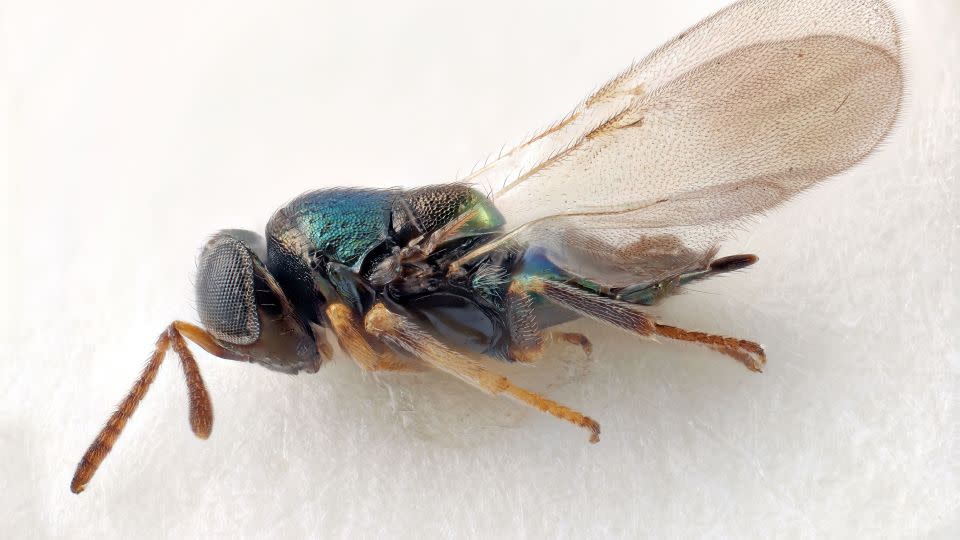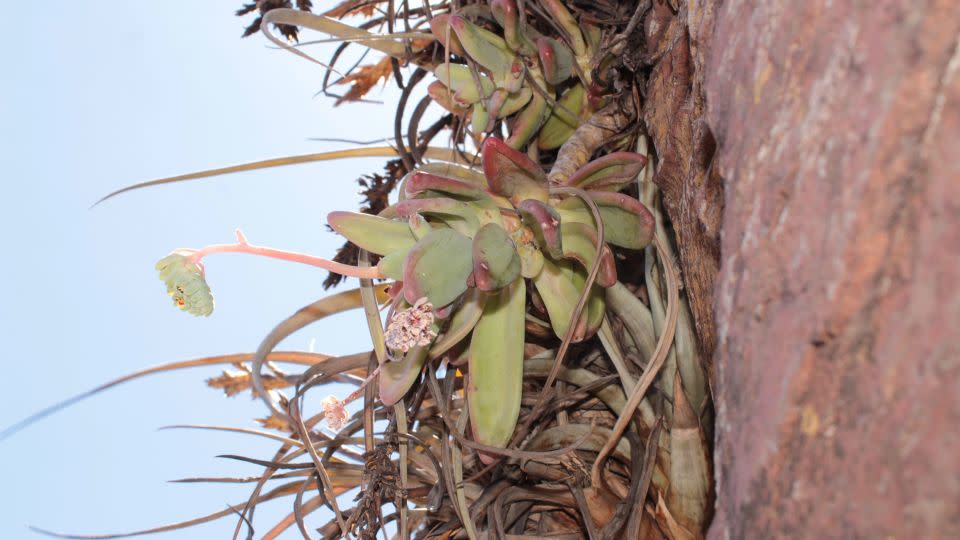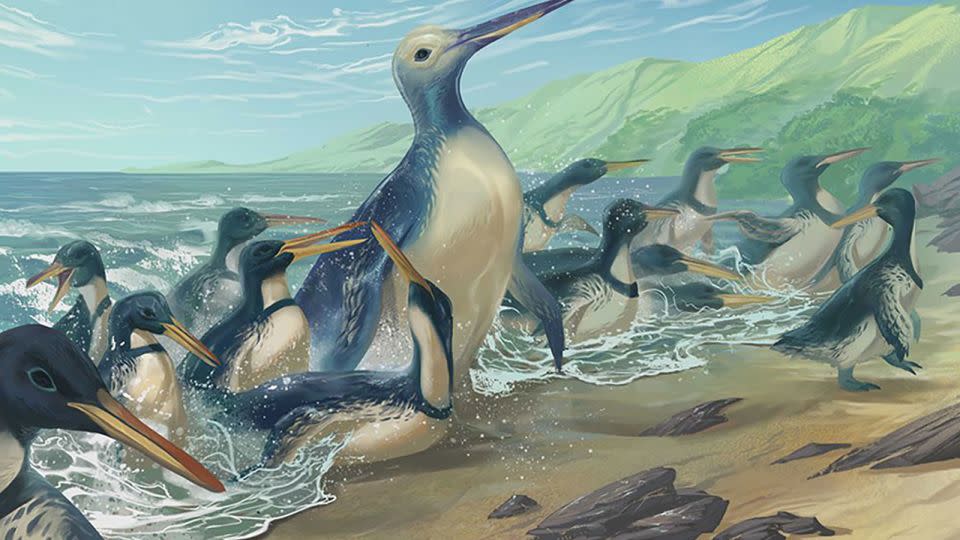Subscribe to CNN’s Wonder Theory science newsletter. Explore the universe with news about fascinating discoveries, scientific breakthroughs and more.
In 2023, scientists from the Natural History Museum in London and the California Academy of Sciences discovered almost 1,000 new species, proving that the Earth still holds many unexplored wonders.
The discoveries were made during a year that marks the 50th anniversary of the U.S. Endangered Species Act, which offers protection to threatened plants and animals and has helped save hundreds of species, according to Scott Sampson, executive director of the Academy of Sciences. California Sciences.
“However, a million more species remain at risk due to human-driven activities such as habitat destruction, climate change and pollution,” Sampson said in a statement. “We must document Earth’s living diversity so we can work to protect it, and the California Academy of Sciences is honored to participate in this critical global effort.”
The diverse list of 968 new species includes previously unknown dinosaurs and extinct creatures, beetles, moths, sea slugs, geckos, fish, frogs, spiders, plants, fungi, worms and a legless skink.
Wasp pest control
Scientists are likely to remember 2023 as the year of the wasp. Of the 815 new species described by Natural History Museum researchers this year, 619 of them were different types of pollinating, predatory and parasitic wasps.

The extraordinary number of discoveries was driven by the work of Dr. John Noyes and Christer Hansson, associate scientists at the Natural History Museum, who are conducting ongoing research to discover bees, ants and wasps in Costa Rica.
“It is important to continue describing new species because many will have a profound influence on their environment and without knowing what to call them, we cannot convey any information about them,” Noyes said.
Some of the new wasp species feature a variety of metallic hues, including blue, purple and orange. As a fan of “Doctor Who” and a nod to the British television series that will turn 60 years old in 2023, Noyes named a genus of wasps after the show’s fictional mutant villains called the Daleks and their creator.
And while wasps may seem like a nuisance armed with stingers, the insects help control pest populations that can affect agricultural crops.
“In the last 60 years or so, three species have been incredibly important. One to prevent possible famine of up to 300 million people in Africa, another to prevent the destruction of the rainforest in Thailand and another for the collapse of Togo’s economy,” Noyes said.
A legless lizard
A new species of legless lizard was found slithering along the slopes of the Serra da Neve, Angola’s second highest mountain. Legless lizards, known as skinks, look like snakes and hide among leaves on the forest floor to hunt for insects and other small prey.
Skinks differ from snakes in that they have external ear openings and mobile eyelids, according to the Virginia Zoo.
While most skinks are uniformly colored, the newly described Acontias mukwando has a pink ring around its neck.
Serra da Neve provides a unique ecosystem for unusual plants and animals that are only found living on the isolated peak. The mountain is at the northern edge of the Namib Desert and has a cool, humid environment.
“Every new species we describe from this mountain, and others like it, is evidence that places like these deserve some kind of conservation consideration,” Academy of Sciences research associate Aaron Bauer said in a statement. “We are still finding new species on these isolated ‘islands’, which tells us that it is not too late to protect them.”
Puzzling plants
Scientists from the National Polytechnic Institute of Durango, Mexico, worked with researchers from the Academy of Sciences to study a rare succulent in the Sierra Madre Occidental mountain range.
The plant, which grows on cliff sides, has long been known to the local indigenous O’dam community. The O’dam people refer to the plant with bald leaves and stems as da’npakal, which means bald, naked, or slippery in their language.


Researchers have named the succulent Pachyphytum odam to maintain the connection between the plant and the community that lives in the land where it grows.
Meanwhile, scientists solved a case of mistaken identity of a flowering plant in Costa Rica. For more than 150 years, the plant was thought to belong to a similar but distinct species in Mexico.
The newly identified plant, Stenostephanus purpureus, is different from a plant called Stenostephanus silvaticus found in Mexico. The flowers are different colors and the Costa Rican plant is missing a flat petal, often called a landing platform for butterflies and other insects while they collect pollen. Instead, hummingbirds probably pollinated Stenostephanus purpureus.
“I never questioned the identification of the Costa Rican specimens, not until I made a side-by-side comparison with images of live plants from Mexico,” Academy of Sciences researcher Ricardo Kriebel said in a statement. “The differences between the two are subtle when working with dried, dead specimens from collections.”
A new look at the past
Researchers at the Natural History Museum have identified four new species of extinct birds by studying fossils, including those that lived during the time of the dinosaurs. One of the most intriguing discoveries of the year was that of Kumimanu fordycei, the largest penguin that has ever lived on Earth. These flightless birds lived 60 million years ago and weighed approximately 330 pounds (150 kilograms).


A previously unknown type of armored dinosaur species was also found on the Isle of Wight. Known as Dinosaur Island, the Isle of Wight is considered one of the best places to find dinosaur fossils in the UK.
The ankylosaur, which lived on the island 140 million years ago, was named Vectipelta barretti in honor of Natural History Museum professor Paul Barrett.
“Paul is incredibly influential in our discipline,” Dr. Susannah Maidment, a museum paleontologist who studied the new species, said in a statement. “He has an incredibly high profile and has contributed enormously to the field. But he’s also had an absolutely huge influence on all of our careers and we wanted to thank him for that. So we decided to name a small, spiky, slow-moving organism after him.”
The researchers also named an ancient mushroom after beloved illustrator and children’s book author Beatrix Potter. The 400-million-year-old Potteromyces asteroxylicola, found infecting the roots of fossilized plants, is the oldest known disease-causing fungus. In addition to writing the Peter Rabbit books, Potter was an avid mycologist who studied and created detailed depictions of mushrooms.
For more CNN news and newsletters, create an account at CNN.com